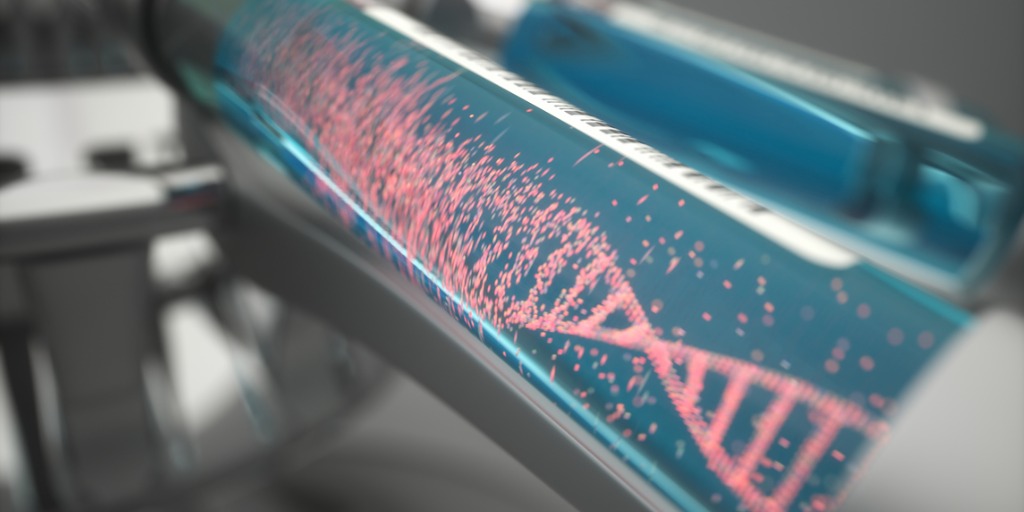
Simply Stated: What is Becker Muscular Dystrophy?
By Sujatha Gurunathan | Thursday, January 6, 2022
5 Second Summary
“Simply Stated” is a Quest column designed to explain some terms and basic facts about neuromuscular diseases.
Find more at Mdaquest.org/tag/simply-stated
Becker muscular dystrophy (BMD) is a rare genetic disorder involving mutations of the dystrophin gene. BMD exhibits similar signs and symptoms to another condition, Duchenne muscular dystrophy (DMD), which is caused by different mutations in the same gene. Although both conditions affect skeletal muscles used for movement, as well as heart muscles, they differ in their severity, age of onset, and rate of progression. BMD occurs in approximately 1 in 30,000 male births.
Symptoms of BMD
In people with BMD, the onset of symptoms and presentation of disease varies greatly from person to person. Affected people may first experience symptoms anywhere from age 5 to 60 years of age. BMD is characterized by progressive skeletal muscle weakness, with the pattern of weakness typically starting in the hips and pelvic area, thighs, and shoulders. A person with BMD may walk with a waddling gait or walk on his toes to compensate for weakening muscles. People with BMD may also display enlarged calves, due to a build-up of scar tissue and the replacement of muscle with fat and connective tissue.
In general, the signs and symptoms of BMD are generally milder and more varied than those of DMD. In people with DMD, muscle weakness typically appears in early childhood and progresses rapidly. Affected children may have delayed motor skills and are often wheelchair-dependent by age 13. In people with BMD, muscle weakness appears later in childhood or adolescence and progresses at a slower rate. People with BMD typically maintain the ability to walk until at least 16 years of age, and often through adult life. They can live well into their forties or beyond.
Cardiomyopathy in BMD
Both BMD and DMD are associated with a type of heart disease, known as cardiomyopathy. BMD-related cardiomyopathy generally begins in adolescence; weakening of the heart muscles prevents the heart from pumping blood efficiently. Later, the heart muscle may become enlarged, leading to a condition known as dilated cardiomyopathy. This condition can cause an irregular heartbeat (arrhythmia), shortness of breath, extreme tiredness (fatigue), and swelling of the legs and feet. BMD-related heart problems can worsen rapidly and become life-threatening. Cardiomyopathy is the number one cause of death in boys with BMD.
Causes of BMD
BMD was first described by the German doctor Peter Emil Becker in 1955 as a distinct disease variant of DMD. Then, in 1986, researchers supported by MDA identified the genetic cause for DMD and BMD, mutations in the dystrophin (DMD) gene.
The DMD gene instructs the production of dystrophin, a protein that is essential for keeping muscle cells intact. Dystrophin works by preventing the muscle cell membrane from breaking or tearing when muscles contract and relax. Dystrophin also holds important molecules in place near the muscle cell membrane. These functions are important to preserve the structure and function of muscle cells. The loss of dystrophin, therefore, leads to muscle damage and degeneration.
In DMD, mutations in the DMD gene result in little or no production of dystrophin. People with BMD, on the other hand, make a shortened form of dystrophin that is partially functional. This shortened dystrophin can protect muscles from degenerating as completely or as rapidly as those of people with DMD.
BMD is considered an X-linked inherited disorder that primarily affects males. The term X-linked refers to the fact that the DMD gene is located on the X chromosome. Boys are born with only one copy of the X chromosome, inherited from their mother. As a result, every boy who inherits an X chromosome with the mutated DMD gene will produce insufficient amounts of dystrophin protein and be affected by the disease. Girls, on the other hand, are born with two copies of the X chromosome, one from their mother and one from their father. Therefore, a girl who inherits one mutated DMD gene may still have normal copy of the DMD gene on her other X chromosome and produce some dystrophin protein. Girls with one copy of the mutated DMD gene are known as carriers; they may experience minor to no symptoms, but can potentially pass on the mutated DMD gene to their children. Carriers of BMD are also reported to be at a higher risk of developing cardiomyopathy.
Evolving research and treatment landscape
There are currently no therapies approved by the US Food and Drug Administration (FDA) to treat BMD. Management of BMD is primarily supportive in nature. Corticosteroids are commonly prescribed to people with BMD to reduce inflammation, and potentially increase muscle mass and strength. Long-term use of corticosteroids, however, can lead to unwanted side effects, such as weakening bones and weight gain. Multidisciplinary care, including cardiac care and physical and occupational therapy, is recommended for people with BMD in order to manage the varied symptoms experienced by each person.
Intense clinical research into BMD provides hope for the future of disease-modifying therapies. Some new therapies being investigated include:
EDG-5506 (Edgewise Therapeutics) – An oral small molecule that may help to stabilize muscles. EDG-5506 is being studied in a phase 1 clinical trial.
Oral weekly glucocorticoid steroid (Northwestern University) – A new regimen of the steroid prednisone being studied in a phase 2 clinical trial. Weekly dosing may improve the function of the steroid treatment and decrease the negative side effects.
(+)-epicatechin (Epirium Bio Inc.) – A flavonoid found in dark chocolate. (+)-epicatechin is being studied in a phase 1 clinical trial. This compound may increase production of energy-producing mitochondria in the heart and muscle and stimulate the regeneration of muscle tissue.
Givinostat (Italfarmaco SpA) – An inhibitor that blocks histone deacetylases (HDACs), which are involved in turning genes ‘on’ and ‘off’ within cells. Givinostat is being studied in a phase 2 clinical trial. This compound may help to activate muscle repair mechanisms.
In addition to the numerous drug candidates under investigation to treat BMD, observational studies are underway to better understand the causes and course of disease, as well as to identify biomarkers that may be used to better diagnose BMD or guide treatment. The Duchenne Registry is an online registry for individuals with DMD and BMD, and female carriers, that is intended to connect patients with actively recruiting clinical trials and research studies. MDA’s MOVR (neuroMuscular ObserVational Research) Data Hub is another resource for individuals with BMD. MOVR collects clinic-entered data from people with seven rare neuromuscular diseases (NMD), including BMD, for use in research to improve clinical care, understand patient outcomes, identify healthcare gaps, and accelerate drug development. Though there are still many unknowns regarding BMD and BMD-related cardiomyopathy, cutting-edge research and development of new therapies offer hope for people living with this condition.
Next Steps and Useful Resources
- MDA’s Resource Center provides support, guidance, and resources for patients and families, including information about Becker Muscular Dystrophy (BMD), open clinical trials, and other services. Contact the MDA Resource Center at 1-833-ASK-MDA1 or ResourceCenter@mdausa.org
- For more information about the signs and symptoms of Becker Muscular Dystrophy (BMD), as well an explanation of the causes of disease, an in-depth overview can be found here.
- To learn more about clinical study opportunities in BMD, visit clinicaltrials.gov
- Stay up-to-date on Quest content! Subscribe to Quest Magazine and Newsletter.
TAGS: Clinical Trials, Innovation, Research, Research Advances, Simply Stated
TYPE: Blog Post
Disclaimer: No content on this site should ever be used as a substitute for direct medical advice from your doctor or other qualified clinician.




